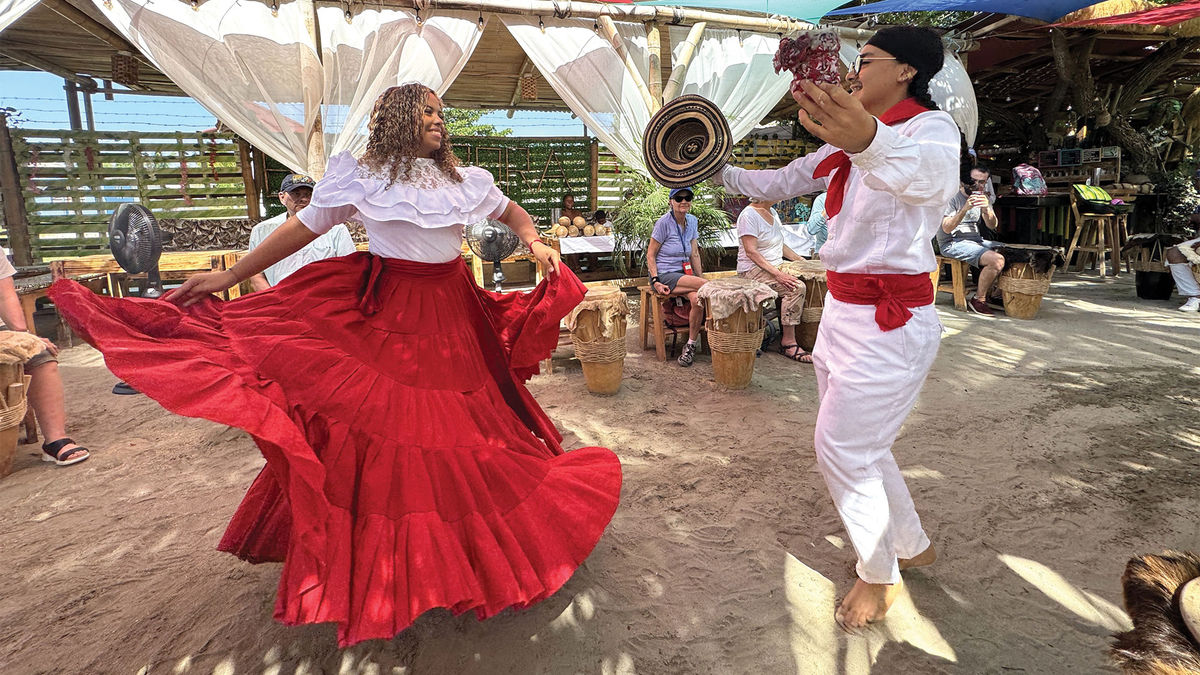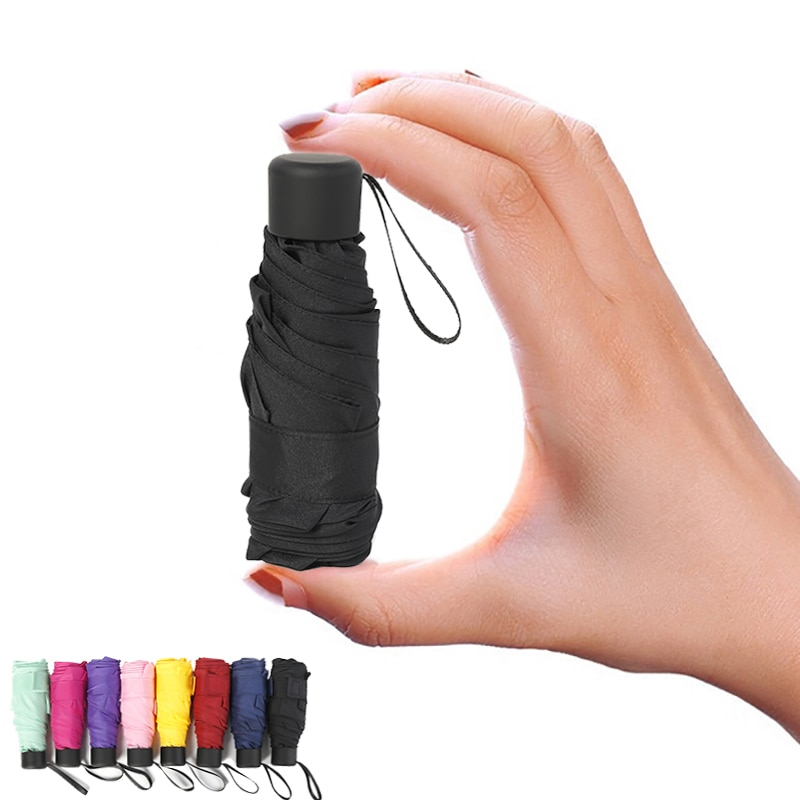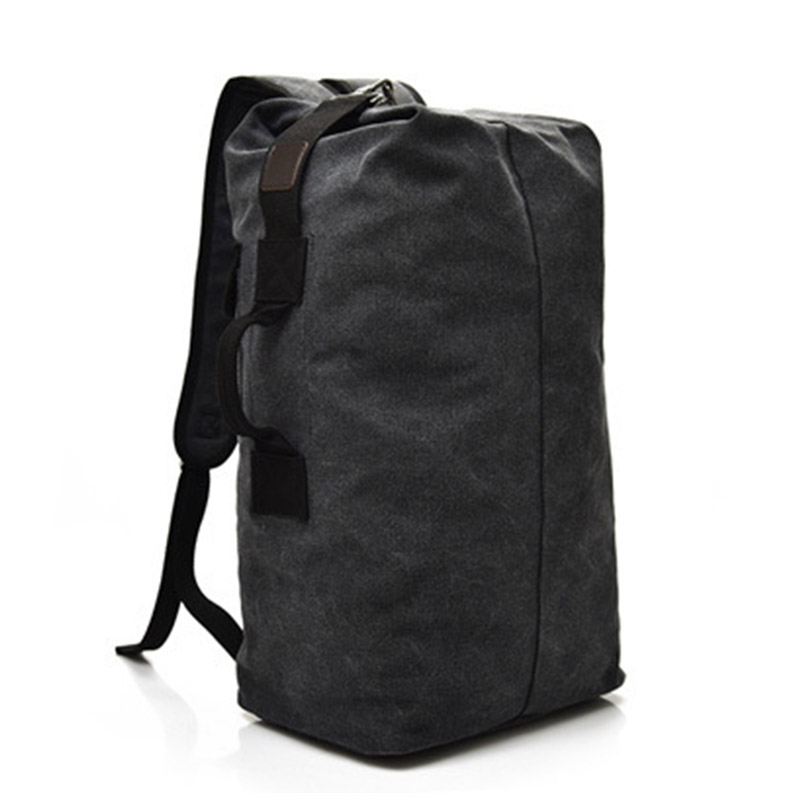Mejdi Tours aims to redefine what a tour can be, inviting travelers to listen deeply, challenge assumptions and find humanity across divides.

Most tour operators tend to try to avoid, rather than meet with, street gangs and revolutionaries. Organized discussions about death squads, vigilantes and drug lords are not typically on itineraries.
But such activities were woven into a recent Mejdi Tours trip to Colombia where, on the first full day, guests sat down with a woman who had been jailed for 15 years as a result of her activity with the Revolutionary Armed Forces of Colombia, better known by its Spanish-language acronym, FARC.
The following day: a visit to one of the roughest barrios in Bogota, guided by the widow of a slain gang leader.
Was this a voyeuristic glimpse into a society that had been shattered by political and drug-fueled violence?
Quite the contrary. Odd as it may sound, the tour was a celebration of the human spirit, of hope rooted in realism, of the progress that emerges from adversity and the power of travel to change the lives of both visitors and hosts.
The tour leader was Mejdi Tours co-founder Aziz Abu Sarah, whose concept of escorted tours seeks not only to dive into a destination’s culture and attractions but to engender empathy and understanding by exploring the complex roots of civil conflict.
The destinations that Mejdi visits are safe but have had intercommunal strife that still smolders: Northern Ireland, the Balkans, the Middle East, North Africa. Although meetings with partisans representing different sides of divisive issues are on the itinerary, the majority of the time is not unlike that spent on other escorted tours. On this visit to Colombia, there were rum and coffee tastings, beach time, several gourmet meals and cultural exploration that focused on music, markets, museums, art and dance.
Learning about the regional music of Colombia at Casa Kilele in Bogota.
Learning about the regional music of Colombia at Casa Kilele in Bogota.
A revolutionary brewer
On the morning of the first full day of the tour, in addition to visiting museums, the group stopped at a coffee house, ice cream stand and chocolate shop.
What they had in common was that each was a social enterprise that developed in response to Colombia’s drug-related problems.
The coffee shop trains people who came to Bogota poverty-stricken after drug lords seized their land to grow coca for cocaine. The ice cream stand featured scoops of mambe, flavored with coca and ash, to provide farmers with an alternative market to cocaine for their coca harvest. And the chocolate shop offered a different profitable option — growing cacao — to farmers who might otherwise be suppliers to narcotraffickers.
Coffee tasting at Bogota’s Arte y Pasion Cafe, where rural Colombians displaced by narcos are taught to be baristas.
That afternoon the group went to La Casa de la Paz (“The House of Peace”), a brewery and coffee shop started by Doris Suarez, who was a fighter with FARC for 14 years, then languished in prisons for 15 more until she agreed to sign the peace treaty.
Although she has renounced violence, her political beliefs have otherwise not altered. Books on shelves along a wall have left-wing revolutionary themes, and one of her brews, an IPA, is named “Fariana,” which was the name for women FARC fighters. On the walls was an exhibit of photos taken in the jungle by a fariana when she was an active guerrilla.
Still, her brewery is named La Trocha, or “the path,” which she sees as an analogy for peace. “A path in the jungle will disappear if it’s not tended,” she said. “The peace treaty is the easy part. Keeping the peace is hard.”
She related her experiences and philosophy in a room above the coffee shop where the tour group assembled with her and two journalists. One was close to Juan Manuel Santos, the president who pushed for the peace treaty, and the other had a more cynical view of the government and peace process. Both had covered the war.
Suarez encouraged any and all questions. In her responses, she said the government has failed to deliver on its promises to FARC and that she doesn’t believe Colombia is truly a democracy. After listing the current failings of the society, she said, “We left weapons behind eight years ago, and the problems persist. So we ask: Was the problem us or social injustice?”
But she sees no alternative to peace and emphasized the need to listen to people with opposing views. “Why were we armed? Why did we sell drugs? The reasons were political, not criminal. When they listened to us, that started the peace process. You must respect each other regardless of what the other thinks.”
Her hope is for the next generation, one that did not go through the negative experiences she and her comrades did. “It’s better not to fight,” she concluded.
The activities of that day, from the ice cream shop through La Casa de la Paz, were organized by Rodrigo Atuesta, the chief impact officer of the destination management company Impulse Travel. He, too, had earlier expressed faith in his generation, who came of age as the treaty was signed. “We are focused on the present and the future,” he told the group, “not the past.”
Former FARC guerilla Doris Suarez tells Mejdi Tours guests about her experiences and frustrations at Bogota’s La Casa de la Paz, the coffee house/brewery she founded.
Former FARC guerilla Doris Suarez tells Mejdi Tours guests about her experiences and frustrations at Bogota’s La Casa de la Paz, the coffee house/brewery she founded.
Tourism: An escape from violence
The following day began with a guided walking tour of Paloquemao, an enormous fruit and flower market in Bogota, which concluded with a sit-down tasting of fruits that most of us had never seen.
Guide Sara Fernandez shares antojitos during a tour of Bogota’s Paloquemao market.
The next activity, however, was one of high emotion. The barrio Egipto, on the very outskirts of Bogota, was home to four gangs perpetually fighting for territory. Within an area of 10 square blocks, there were as many as 90 murders a year, some of the victims as young as 13.
Jaime Roncancio was the son of the leader of one of the gangs, and he wanted his children to be free from the cycle of violence that defined life in Egipto. The neighborhood was notorious — if anyone did venture in, they would certainly be robbed. He thought perhaps people would want to visit it if they felt safe, and he began putting up flyers in youth hostels offering his services as a guide.
Impulse Travel’s Atuesta heard about it and met with Roncancio. “He was a natural storyteller,” Atuesta said. “Bogota has amazing muralists, and we brought them into the neighborhood to put the story of Egipto on the neighborhood’s walls.”
The tour was marketed as “Breaking Borders.” It was a success, and the number of murders dropped to zero annually — until last October, when Roncancio, the architect of the initiative, was killed.
The group giving the tours subsequently divided into two — one led by women, including his widow, Viviana, and Orienna, his half sister, and one by the male members of the gang. Both came together amicably to co-lead our tour.
Viviana Roncancio, the widow of the gang member who conceived of Breaking Borders, which gives tours of Egipto.
A former gang member, now a tour guide in Egipto.
We learned about gang signals and slang, and the symbolism in the gaily colored murals. We visited Viviana’s home, which was little more than a shack clinging onto a hillside. One of the members rapped for us; another, nicknamed Pato, quite eloquently told how growing up in Egipto was the equivalent of attending the Harvard of gang life.
“This university teaches you hard lessons,” he said. “Your diploma is the scars on your body. To be the best, you paid with your life.
“This project gave us the opportunity to escape the feeling of being condemned. Proposals and ideas have replaced sadness and suffering. We learned that happiness is not getting fat as whales but to be a tour guide. We meet to plan our lives rather than to plan who we would kill.”
At the end of the tour, our tour guides offered to sell friendship bracelets and gang-slang dictionaries and also showed us a weaving center and shop that opened for the women of Egipto as well as a gift shop selling woodwork that the men of the neighborhood made.
Mejdi Tours co-founder Aziz Abu Sarah tries his hand at a loom in the weaving center in Egipto.
From there, the day ended at a community center where a husband-and-wife team took the group through the musical styles, regional rhythms and instruments of Colombia, with plenty of audience participation.
The buildings of Egipto, a formerly gang-controlled barrio in Bogota that now attracts tourists with colorful streets and murals.
The buildings of Egipto, a formerly gang-controlled barrio in Bogota that now attracts tourists with colorful streets and murals.
Medellin and Comuna 13
Medellin, the center of the Colombian drug trade in the 1980s and early 1990s, was our next destination. The residents of the city had been terrorized both by the drug gangs and by rival paramilitary vigilantes.
Today, it’s a magnet for digital nomads and high-end tourists who revel in the balmy climate. While many visitors who had watched the Netflix series “Narcos” come to Medellin to see sites associated with the romanticized version of Pablo Escobar, those who actually lived through his reign regard him only as a brutal thug. Locally, there is great resentment of “narco tours” and the souvenirs and T-shirts that bolster Escobar’s false Robin Hood image.
“All the focus is on him, not on his 38,000 victims in Medellin,” said our guide, Carolina Diaz, whose uncle had been kidnapped and killed by Escobar’s gang before her family fled to Bogota.
One of our first stops in Medellin was at Museo Casa de la Memoria, dedicated to the victims of narco terror. Its sobering exhibits stand in stark contrast to the glamorized film versions of the era.
At one point, our van stopped and picked up a boyish-faced young man. It was NeNe, the lead singer of the Medellin hip-hop group Son Bata. Upon entering, NeNe rapped the group’s hit “Boom.”
Rapper NeNe explains how he helped turn around Medellin’s reputation from crime to music.
We went to an outdoor recreation platform overlooking the city, and NeNe told us how rap music saved him from being recruited by the gangs. A friend had given him a cassette, and although he didn’t understand the lyrics, he had fallen in love with Run-DMC, the Notorious B.I.G. and other old-school rappers. “The cassette was my shield,” he said. “When the guerrillas offered me a gun, I said my weapons were my notebook and pencil.”
When the city became safe, he wanted to help change its image and successfully invited the Colombian global superstar Juanes to come and play a free concert on the very platform where we were sitting.
More than 15,000 people attended. “Even the New York Times came,” NeNe said. “We were in the news, and for once, it wasn’t about violence.”
NeNe gave our tour group a drumming lesson on overturned plastic buckets and talked about new programs for kids, including a “Coding, not Crime” initiative and paying jobs at hydroponic gardens.
From there we went to the once-notorious slum Comuna 13, which now has a carnival-like atmosphere with restaurants and bars and surreal giant statues built for photo ops. There were plenty of stalls selling Pablo Escobar T-shirts, shot glasses and other paraphernalia; there is currently a law being considered by Colombian legislators to ban items glorifying Escobar.
It may soon be illegal to sell souvenir shot glasses featuring the image of drug lord Pablo Escobar, who is reviled in Medellin.
Comuna 13, a once-notorious barrio in Medellin, now offers a carnival-like atmosphere for tourists.
Comuna 13, a once-notorious barrio in Medellin, now offers a carnival-like atmosphere for tourists.
Cartagena — Caribbean Colombia
Of all the places we visited, Cartagena is the most touristy, and for good reason. Its colonial center is charming, its restaurants outstanding, its neighborhoods lively and colorful, and its location on the Caribbean offers beach resorts on islands just offshore.
Although Colombia is well known for its biodiversity, our tour was almost exclusively urban. The one exception was a morning visit to the coastal community of La Boquilla, about a 30-minute drive from Cartagena.
The community is poor but beautiful. Developers have their eye on it. Residents aren’t so sure they want the changes that might come with gentrification and are working to stake out their own vision for tourism.
A group of fishermen in La Boquilla decided to create ecotours through the mangroves that provide an offshore barrier, and our group went out in their small boats in hopes of seeing some of the 200 bird species that live in the swamps.
We did indeed see dozens of large wading birds — herons, egrets and ibises among them — and it was enjoyable just gliding through the shady channels (and, upon return drinking, first, fresh coconut water and then, Costenita beers).
Oralys Barrios, the group’s guide in La Boquilla, enjoying fresh coconut water.
Another interactive music opportunity came just after lunch. A local drum and dance school whose students had been invited to a festival in New Orleans put on a show and instructed us in various beats and steps.
In an attempt to lower the land prices in La Boquilla, developers are trying to portray it as a dangerous, crime-ridden area. But resistance against them could be seen in a prominent school slogan: “La Boquilla — No es como la pintan.” (La Boquilla — It is not as they paint it.”) When I asked an instructor about it, he said, “We can color ourselves.”
Bartender “Coco” prepares drinks for a rum tasting in Cartagena.
Fishermen in La Boquilla, near Cartagena, offer ecotours through mangroves.
Fishermen in La Boquilla, near Cartagena, offer ecotours through mangroves.
Return to Colombia
Mejdi Tours co-founder Abu Sarah’s experiences as a Palestinian growing up in East Jerusalem led him on a lifelong journey to promote conflict resolution. Earlier in the month that the Colombia tour had taken place, he had given a TED talk with an Israeli friend that caught the attention of Pope Francis, who invited Abu Sarah to meet him in Vatican City.
It may seem odd for a Palestinian to lead a tour to Colombia, but it was a homecoming of sorts for Abu Sarah. In 2015, he had been sent there by National Geographic as a cultural educator and caught the eye of the U.S. Embassy in Bogota. Shortly afterward, the State Department asked if he would go back to Colombia to help with the integration of FARC into general society.
In the end, he characterized that effort as a “missed opportunity.” Because FARC was still on the U.S. list of terrorist organizations, he wasn’t allowed to meet with them directly, which hindered his work. But he did get to meet Impulse Travel’s Atuesta during that time and began to see the opportunity for tourism in Colombia.
A lot of tour operations talk about “authentic” or “immersive” tours; I’m not sure I’ve ever been on one that lives up to the claim as much as this Mejdi tour of Colombia. The impact of the arc of the trip is likely the reason that the vast majority of those on the tour were on their second, third or, for one couple, their fourth Mejdi tour.
• • •
For some travelers, sun and sand are the goal. Others focus on gastronomy or culture. Emily Schneider, an assistant professor at Northern Arizona State University, surveyed guests on a Mejdi tour and found that 93% said they had more empathy for the people in the host country than they had previously had before joining the tour.
It strikes me that now, perhaps more than at other times, increasing empathy for the people you meet when traveling is an especially worthy and satisfying goal.









